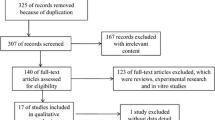Abstract
Introduction
The pathogenesis of prosthesis loosening is not well understood. The aim of our study was to sonicate components of joint prostheses removed due to aseptic loosening, culture the sonicate fluid, and to correlate these results with the degree of radiological osteolysis.
Methods
From January 2008 to June 2009 all consecutive patients who underwent a revision of hip or knee prosthesis due to aseptic loosening were included in the study. Aseptic loosening was established when the patient had radiological signs of loosening without symptoms or signs of infection. The diagnosis was confirmed when histology was negative, and ≥5 out of 6 standard cultures of periprosthetic tissue were negative. Bone lysis was measured according to the Paprosky or Engh classifications without knowing the result of sonication cultures. Removed components were placed in sterile bags and immediately transported to the microbiology laboratory and sonicated. Sonicate fluid was cultured and the results were correlated with the degree of bone lysis. The proportion of components with positive sonication culture according to the bone lysis classification was compared using χ2 test.
Results
A total of 52 patients were included and 123 components were sonicated. In 30 patients at least 1 sonicated component was positive (57.7%) and 44 out of 123 (35.8%) components were positive. The proportion of positive sonication cultures was significantly higher in the group of components with a higher degree of bone lysis of 3 (76.5%) than in those with lower degrees (33.9% for 1 and 24% for 2) (χ2 test, p = 0.0004).
Conclusions
Sonication cultures were positive in 57% of patients who underwent revision arthroplasty for aseptic loosening. The percentage of positive sonication cultures was significantly higher in patients with severe osteolysis.
Level of evidence
level I of Prognostic Studies—Investigating the Effect of a Patient Characteristic on the Outcome of Disease.


Similar content being viewed by others
References
Kurtz S, Ong K, Lau E, Mowat F, Halpern M (2005) Projections of primary and revision hip and knee arthroplasty in the United States from 2005 to 2030. J Bone Joint Surg Am 89:780–785
Kurtz S, Mowat F, Ong K, Chan N, Lau E, Halpern M (2005) Prevalence of primary and revision total hip and knee arthroplasty in the United States from 1990 through 2002. J Bone Joint Surg Am 87:1487–1497
Kadoya Y, Kobayashi A, Ohashi H (1998) Wear and osteolysis in total joint replacements. Acta Orthop Scand Suppl 278:1–16
Harris WH (2001) Wear and periprosthetic osteolysis: the problem. Clin Orthop Relat Res 393:66–70
Engesaeter LB, Lie SA, Espehaug B, Furnes O, Vollset SE, Havelin LI (2003) Antibiotic prophylaxis in total hip arthroplasty: effects of antibiotic prophylaxis systemically and in bone cement on the revision rate of 22, 170 primary hip replajcements followed 0–14 years in the Norwegian Arthroplasty Register. Acta Orthop Scand 74:644–651
Bi Y, Collier TO, Goldberg VM, Anderson JM, Greenfield EM (2002) Adherent endotoxin mediates biological responses of titanium particles without stimulating their phagocytosis. J Orthop Res 20:696–703
Bi Y, Seabold JM, Kaar SG, Ragab AA, Goldberg VM, Anderson JM, Greenfield EM (2001) Adherent endotoxin on orthopedic wear particles stimulates cytokine production and osteoclast differentiation. J Bone Miner Res 16:2082–2091
Tunney MM, Patrick S, Curran MD, Ramage G, Hanna D, Nixon JR, Gorman SP, Davis RI, Anderson N (1999) Detection of prosthetic hip infection at revision arthroplasty by immunofluorescence microscopy and PCR amplification of the bacterial 16S rRNA gene. J Clin Microbiol 37:3281–3290
Costerton JW, Stewart PS, Greenberg EP (1999) Bacterial biofilms: a common cause of persistent infections. Science 284:1318–1322
Trampuz A, Piper KE, Jacobson MJ, Hanssen AD, Unni KK, Osmon DR, Mandrekar JN, Cockerill FR, Steckelberg JM, Greenleaf JF, Patel R (2007) Sonication of Removed Hip and Knee Prostheses for Diagnosis of Infection. N Engl J Med 357:654–663
Paprosky WG, Perona PG, Lawrence JM (1994) Acetabular defect classification and surgical reconstruction in revision arthroplasty. A 6-year follow-up evaluation. J Arthroplasty 9:33–44
Sporer SM, Paprosky WG (2003) Revision total hip arthroplasty: the limits of fully coated stems. Clin Orthop Relat Res 417:203–209
Engh GA, Ammeen DJ (1998) Classification and preoperative radiographic evaluation: knee. Orthop Clin North Am 29:205–217
Nelson CL, McLaren AC, McLaren SG, Johnson JW, Smeltzer MS (2005) Is aseptic loosening truly aseptic? Clin Orthop Relat Res 437:25–30
Nguyen LL, Nelson CL, Saccente M, Smeltzer MS, Wassell DL, McLaren SG (2002) Detecting bacterial colonization of implanted orthopaedic devices by ultrasonication. Clin Orthop Relat Res 403:29–37
Barrack RL, Aggarwal A, Burnett RS, Clohisy JC, Ghanem E, Sharkey P, Parvizi J (2007) The fate of the unexpected positive intraoperative cultures after revision total knee arthroplasty. J Arthroplasty 22:94–99
Wroblewski BM (1986) One-stage revision of infected cemented total hip arthroplasty. Clin Orthop Relat Res 211:103–107
Author information
Authors and Affiliations
Corresponding author
Rights and permissions
About this article
Cite this article
Sierra, J.M., García, S., Martínez-Pastor, J.C. et al. Relationship between the degree of osteolysis and cultures obtained by sonication of the prostheses in patients with aseptic loosening of a hip or knee arthroplasty. Arch Orthop Trauma Surg 131, 1357–1361 (2011). https://doi.org/10.1007/s00402-011-1307-4
Received:
Published:
Issue Date:
DOI: https://doi.org/10.1007/s00402-011-1307-4




